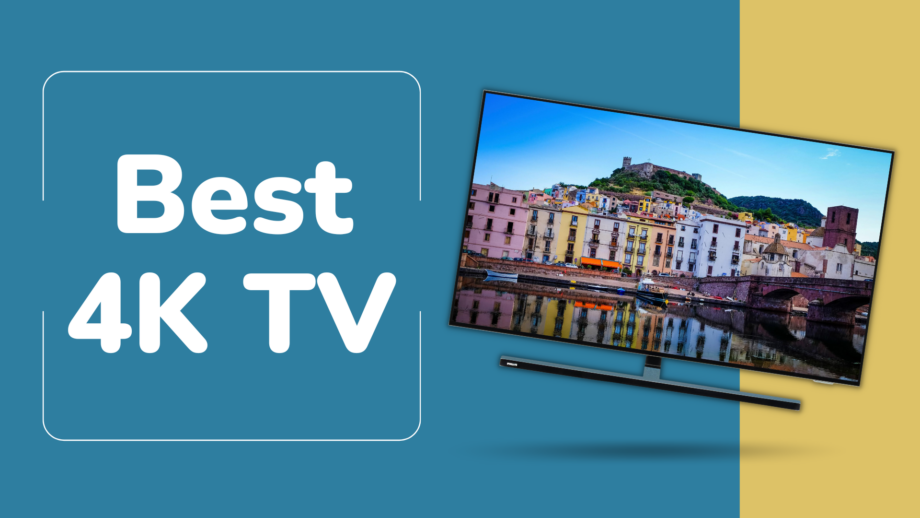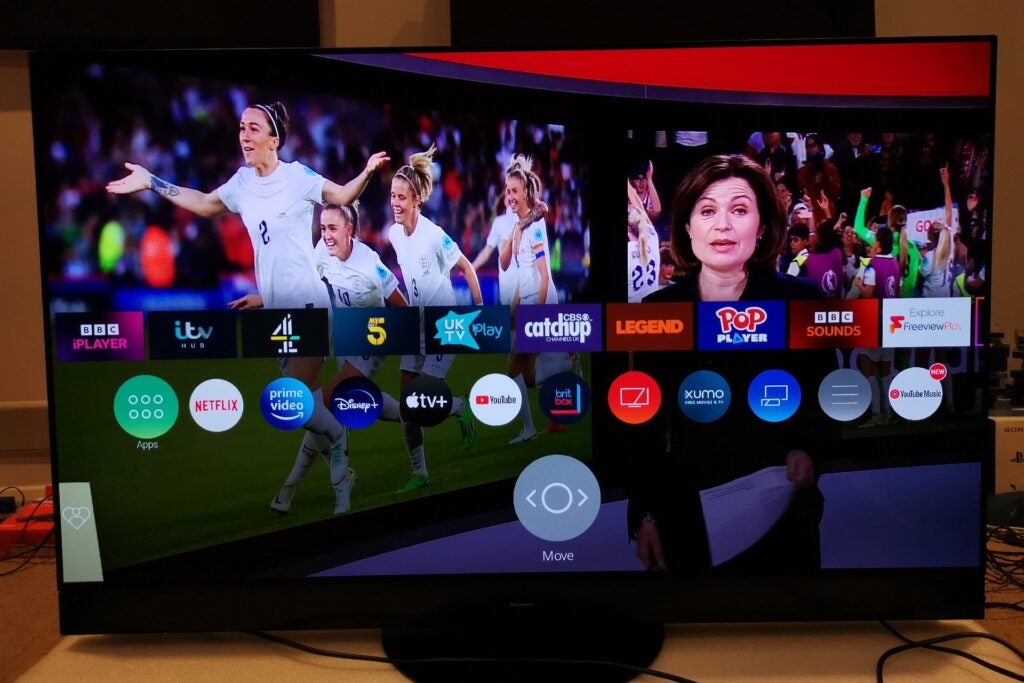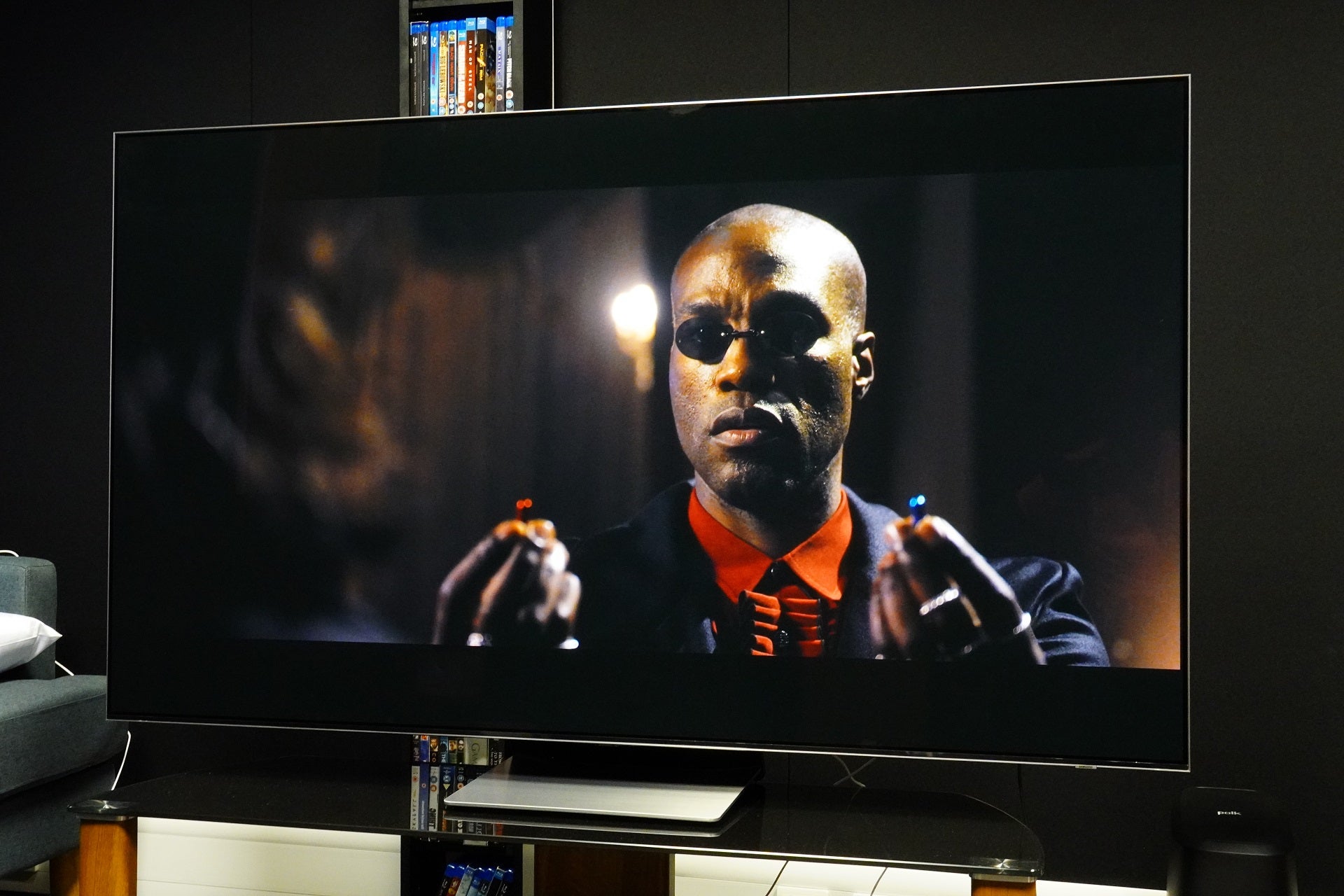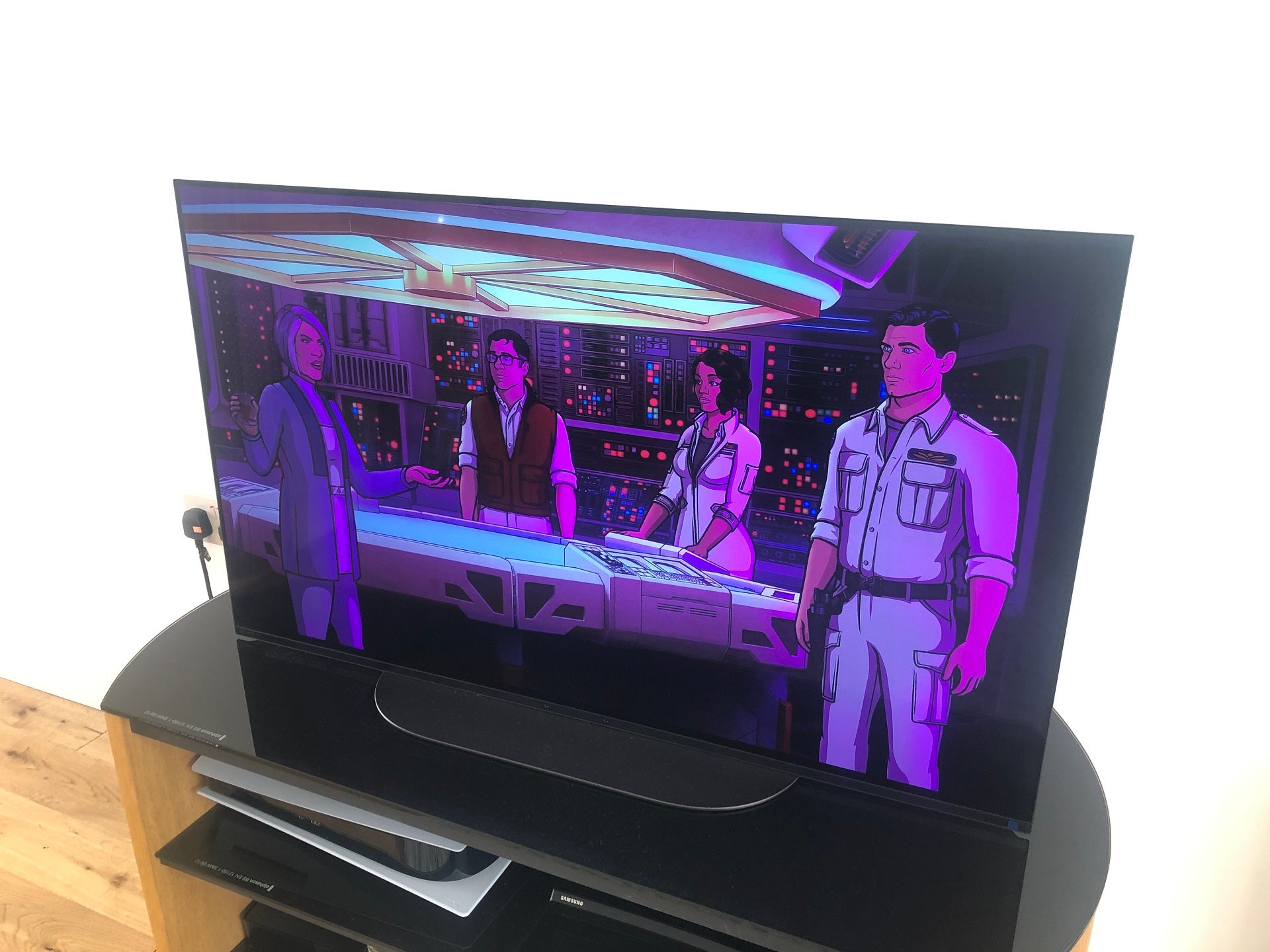Best 4K TV 2024: Our favourite sets to buy right now

If you’re after the best HDR performance then you’ve reached the right place with Trusted Reviews’ list of the best 4K TVs.
We review lots of 4K TVs each year, and that gives us insight in the type of performance you’ll need to bring out the best of the TV series, films, and sports you love to watch. The models that appear on this best 4K TV list are the ones we recommend you give serious consideration to when you are searching for a new 4K TV.
We’ve intentionally made sure that the 4K TVs cover the £1000 to £2000 price bracket, the area we feel is where you should be looking at if you want a good HDR experience. We’ve assess the design, interfaces (and how easy they are to use), picture quality and sound quality to determine whether these TVs give you that best bang for your buck.
We don’t discriminate against brands either Whether you’re Samsung or LG, Panasonic or Sony, Philips or Hisense; if the TV is good enough to warrant its inclusion, we will feature it.
Of course, these TVs may not be the ones you’re looking for. If your budget is less than a £1000, have a look out our best cheap TV list.. If you’re looking for an OLED, have a look at our best OLED TV. Or if you are sparing no expense in your search for a new TV, check out our round up of the best 8K TVs.
Best 4K TV at a glance
- Best 4K HDR TV: Panasonic TX-55LZ2000 – check price
- Best 4K TV for movies: Sony XR-55A90J – check price
- Best mid-range 4K TV: LG OLED65C2 – check price
- Best small 4K HDR TV: Philips 48OLED807 – check price
- Best Samsung 4K HDR TV: Samsung QE55QN95B – check price
- Best Hisense 4K HDR TV: Hisense 65U7KQTUK – check price
How we test
Every TV we review is put through the same set of tests to gauge its picture performance, usability, and smart features.
Tests are carried out over several days and are done by eye but supported with technical measurements. Testing by eye involves an expert watching a wide range of material to understand and determine a TV’s performance in fields such as brightness, contrast, motion processing, colour handling and screen uniformity.
We’ll consider the design of the TV in terms of build quality, study the spec sheets and see if the TV’s connections are up to spec, as well as playing video and audio content to ensure that the set handles playback as it claims. We also take note whether a product’s compatible formats and features are in line with industry trends or not to gauge whether it’s relevant for you.
Comparison to other related and similarly priced products is also important, to see if it’s missing any vital features and whether it impresses as a whole. After all this, we’ll come to a judgement on how the TV performs as a whole.
If you want to learn more, please visit our detailed page about how we test televisions.
- Superb picture quality
- Great new OS and remote control
- Some HDMI 2.1 compatibility
- Some HDMI 2.1 omissions
- Quite pricey
- Great 4K HDR performance
- Improved design
- Comprehensive gaming features
- Better motion skills
- More expensive than C1 initially was
- So-so Atmos sound
- Brilliantly bright and impactful HDR performance
- Elegant, minimalist design
- Lots of entertainment options
- High-end gaming support
- Average, unexciting sound
- Still some blooming, especially at wide angles
- No Dolby Vision
- Dynamic 4K image quality
- Multi-HDR support
- Game Mode Extreme
- 360 Soundscape Pro system could be overkill
- Only two 4K 120fps HDMI inputs
- Sharp, detailed and colourful image
- Better-than-expected sound
- Competitive gaming features
- Stylish design
- Ambilight, of course
- Not as bright as expected
- LG OLED better overall for gaming
- Remote can be frustrating
- Impressive specification
- Balanced, colourful and generally convincing images
- Good smart TV features
- Unremarkable sound
- Has upscaling issues

Panasonic TX-55LZ2000
Best 4K HDR TV
Pros
- Dynamic 4K image quality
- Multi-HDR support
- Game Mode Extreme
Cons
- 360 Soundscape Pro system could be overkill
- Only two 4K 120fps HDMI inputs
With the JZ2000 hard to find online, we’ve replaced it in this list with its successor in the LZ2000, which has fallen to the lowest price we’ve seen it at £1699.
The LZ2000 supports all HDR formats, and over the course of testing we felt the LZ2000 produce the most dynamic, overtly vibrant HDR performance we’ve seen from the Panasonic OLED. Average brightness is higher than it was on the JZ2000, as is peak brightness with the LZ2000 able to hit close to 1000 nits. Colour volume is improved, specifically blues; and with Hollywood colourist Stefan Sonnenfeld once again assisting with the colour performance, the LZ2000 is capable of fabulous levels of fidelity.
With 150W of power assigned to the sound system, the main upgrade to the 360° Soundscape Pro system is the addition of a forward-facing speaker array that can direct sounds to the left or right. Overall, the Panasonic LZ2000’s Dolby Atmos sound system is capable of genuine height and width, as well as a surprising amount of bass.
Freeview Play guarantees mainstream catch-up TV needs are covered, and the addition of Disney+ and Apple TV+ widens the breadth of video streaming apps on offer. Gaming is improved over previous models with the addition of Dolby Vision Gaming, better input response at 14.5ms, and AMD FreeSync VRR though it still lags the LG C2, which we consider to be the best TV for gaming.
The LZ2000 remains a TV unsuited for those who already have a capable home cinema system but as an all-in-one audio-visual solution, it’s Panasonic’s best OLED TV.
Reviewer: Steve May
Full Review: Panasonic LZ2000

Sony XR-55A90J
Best 4K TV for movies
Pros
- Superb picture quality
- Great new OS and remote control
- Some HDMI 2.1 compatibility
Cons
- Some HDMI 2.1 omissions
- Quite pricey
The A90J is one of Sony’s Bravia XR Cognitive TVs, which features a processor that claims to work like how our brain does, boosting colour, contrast, and detail for a more lifelike image.
It’s not as slim as the LG G1, but its stand can be configured in more ways that offers a degree of flexibility in terms of placement. ALLM and VRR support were added in March 2022, but gaming features are still behind the LG C1 and Panasonic JZ1000.
We found using the Google TV interface to be a more welcoming affair than previous Android TV interfaces such as the one on Sony’s A8 model. Sony’s Bravia Core movie-streaming service has lots of content and streams in high quality (if you have the broadband speeds to match), as well as IMAX Enhanced content.
And when given high-quality content to work with, our reviewer found the Sony capable of producing profoundly impressive pictures. The overall colour palette was striking, the Sony drawing on a wide, subtle, and entirely convincing palette. Its motion skills show the Sony is at its most accomplished, gripping images with laser focus.
The A90J uses the company’s ‘Acoustic Surface Audio+’ technology and we enjoyed it, sounding more nuanced and more direct than flatscreens are usually capable of, though the bass performance is not as powerful as the Philips 65OLED+936. The A90J is a very good TV but it is bettered by the A95K QD-OLED. If you’re after the best picture quality from Sony, we’d recommend that model even though it comes at a premium.
Reviewer: Simon Lucas
Full Review: Sony XR-55A90J

LG OLED65C2
Best mid-range 4K HDR TV
Pros
- Great 4K HDR performance
- Improved design
- Comprehensive gaming features
- Better motion skills
Cons
- More expensive than C1 initially was
- So-so Atmos sound
The previous occupant of this spot was the still great LG C1, but with the OLED65C2 now having fallen below the £2000 mark in the wake of the OLED65C3 being released, we felt it now merited its position on this list.
And that’s because it’s a fantastic 4K TV. With the OLED65C2 you can get as comprehensive a performance as you can get from a mid-range 4K TV. We measured the HDR performance to offer 854 nits of brightness, which is a step from the older C1 model. That level of brightness along with OLED’s ‘perfect blacks’ allows for an excellent level of contrast to give films that three-dimensional look.
The set’s motion processing has been improved, and while we found there remained a degree of artificiality to movement in World War I drama 1917, it’s less obvious and less distracting. Upscaling has been boosted with impressive levels of detail and clarity conveyed with HD content. Even with 720p content and lower, there’s a decent amount of detail being shown on screen.
The set’s Dolby Atmos performance is spacious, as well as being crisp and clear, but we found it lacked impact and heft for a overall performance that’s lacklustre. A soundbar would certainly help with in boosting the TV’s sound, as LG’s OLEDs really seem to suffer from an anaemic performance.
An aspect we’re much more favourable about is the design of the TV. The plinth the TV stands on is smaller, which helps with positioning the TV on smaller furniture. It also has the added benefit of making it easier to to trail cables in a less messy manner, especially helpful when adding a soundbar, and the set weighs much less than previous generations, making it easier to assemble.
Like previous LG OLEDs, there’s a full set of gaming features to enjoy with ALLM, VRR and 4K/120Hz HFR across all HDMI inputs, making it a better specc’d TV for gaming than the Samsung QN95B. Latency isn’t as fast as the Samsung model at 12.9ms but with Game Boost and VRR engaged, latency falls to very low levels.
Aside from the limp audio, you’d be hard-pressed to find a better mid-range model than the C2 at this price. We’d even recommend it over the OLED65C3, which we found to not be that big a step over the C2.
Reviewer: Kob Monney
Full Review: LG OLED65C2

Philips 48OLED807
Best small 4K HDR TV
Pros
- Sharp, detailed and colourful image
- Better-than-expected sound
- Competitive gaming features
- Stylish design
- Ambilight, of course
Cons
- Not as bright as expected
- LG OLED better overall for gaming
- Remote can be frustrating
The 48OLED807 is the first Philips OLED we’ve tested below 50-inches, and despite its smaller size, it produces a similar performance to the bigger models.
It doesn’t feature the brighter OLED EX panel, but over the course of testing we’d argue that it didn’t really need it. Its peak brightness of 416 nits isn’t as bright as the LG OLED42C2, but OLED’s black levels combined with the Philips P5 processor wrings out plenty of brightness from white tones, creating lovely, deep contrasts.
Its HDR support includes Dolby Vision HDR, HLG and HDR10+ Adaptive, helping the Philips to optimise its HDR performance (which is helpful considering the low peak brightness).
The image can be a very sharp and detailed one, extracting as much detail as it can. Some may find it looks too artificial, but we found it much more detailed and sharper than the bigger-sized 55-inch Samsung QN90B, which looked soft by comparison.
The sound quality is better than LG’s OLED, outputting a big presentation with decent amounts of bass. We would add a soundbar to this TV but wouldn’t be in a rush to do so.
If you’re into gaming, the OLED4807 boasts Dolby Vision Game mode, AMD/Nvidia VRR solutions and 4K/120Hz support. Unlike LG’s OLED42C2, it doesn’t support some of those features across the entirety of its HDMI inputs, and at 15.2ms the latency is as fast as that model.
Four-sided Ambilight both reduces eye strain and provides a fantastic light-show as the LEDs on the rear panel mirror the colours on-screen in real time. The Philips is an excellent OLED TV and highly recommended if you need a screen smaller than 50-inches.
Reviewer: Kob Monney
Full Review: Philips 48OLED807

Samsung QE55QN95B
Best Samsung 4K HDR TV
Pros
- Brilliantly bright and impactful HDR performance
- Elegant, minimalist design
- Lots of entertainment options
- High-end gaming support
Cons
- Average, unexciting sound
- Still some blooming, especially at wide angles
- No Dolby Vision
The QN95B has been replaced by the QN95C, but right now it’s dropping so fast in price that it can be had for just over £1000, and in that context it is a bargain. While the previous incumbent of this position, the QN94A, is still available, the QN95B improves upon its picture performance.
When it comes to HDR, you won’t find a more capable TV than this Samsung on this list. In its Standard mode we measured its HDR performance at 2369 nits, which is bright enough to make content visible in a room with lots of ambient light so what’s on screen won’t appear washed out. It produces a colourful and vibrant image with a splendid array of colours and, in our estimation, compared to the step-down QN90B model, we feel it’s more controlled in how it deploys its vast amounts brightness, more accurately representing brighter objects in a bright scene.
That level of brightness does produce blooming, with halos of light around bright objects that can distract. This isn’t too distracting from a head-on position, but people watching at wider angles will be more sensitive to it.
When it comes to gaming, the QN95B is outfitted with Auto low latency mode to the TV into its quickest mode for gaming, while variable refresh rate support (HDMI VRR and AMD FreeSync Premium Pro) reduces screen tearing for better picture quality. We measured input lag at 10.2ms, which makes the QN95B one of the most fastest and most responsive models on the market.
Like it is for most TVs, audio is the QN95B’s weakest area. The sound from the built-in speaker unit is crisp and clear, and the OTS (Object Tracking Sound) system cleverly places audio where it should be on screen. But the TV lacks weight and sounds thin, the lack of bass is especially notable in action films. We’d recommend budgeting for a soundbar.
Reviewer: Kob Monney
Full Review: Samsung QE55QN95B

Hisense 65U7KQTUK
Best Hisense 4K HDR TV
Pros
- Impressive specification
- Balanced, colourful and generally convincing images
- Good smart TV features
Cons
- Unremarkable sound
- Has upscaling issues
Hisense has been one of the leading lights in offering an impressive specification for its TVs at an affordable price, but that hasn’t always meant a stellar performance. The Hisense U7K is a 4K TV we can heartily recommend, though.
Priced at an aggressive £1499 / $1049, the Hisense is a Mini LED that undercuts Samsung’s range of Neo QLED Mini LED TVs such as the QN85C. It claims a performance of around 1000 nits of peak brightness and delivers a very complete and convincing image when given native 4K HDR content.
Our reviewer found there were numerous subtle differences in tone and colour volume visible in the image, with skin tones enjoying plenty of variety, while the rest of the colour palette was vibrant without ever becoming overblown or unnatural. Black tones are respectably deep with no crushing evident even in dark scenes. It supports every useful HDR standard in HDR10, HDR10+ Adaptive, Dolby Vision IQ; along with IMAX Enhanced certification and Filmmaker mode for greater picture accuracy.
The performance of the audio system is not the best we’ve heard, eliciting good clarity from the midrange but rather tentative in describing bass and producing a flat, undynamic sound overall. We’d recommend you budget to add a soundbar to this TV.
The VIDAA U interface keeps things simple with all the major on-demand and catch-up apps included, and we found it didn’t take too long for its algorithms to start suggesting content we’d actually want to watch. Gaming-wise it supports AMD FreeSync Premium for PC gamers, auto low latency mode and refresh rates up to 144Hz, making this a competitive TV to the likes of the QN85C and TCL 65C845K Mini LED models.
The Hisense U7K is a bit of a bargain for its price. It’s well specified, and performs very well for its price point with good picture and gaming skills.
Reviewer: Simon Lucas
Full Review: Hisense 65U7KQTUK
We also considered…
FAQs
The LG OLED65C1 supports every gaming feature going, with ALLM, VRR, 4K/120Hz HFR, AMD FreeSync Premium, Nvidia G-Sync, Google Stadia and it’s now available for £1500.
The Sony A90J features excellent 4K HDR picture quality, with support for HDR10, HLG and Dolby Vision, impressive motion processing and excellent contrast. If you don’t have home cinema set-up, the TV’s Surface Acoustic speakers are very adept at delivering a direct and impactful sound for a flatscreen TV.











